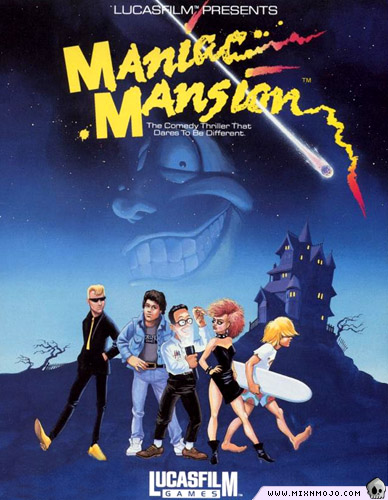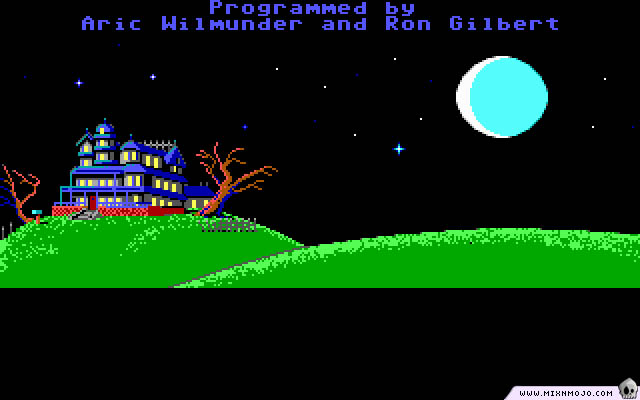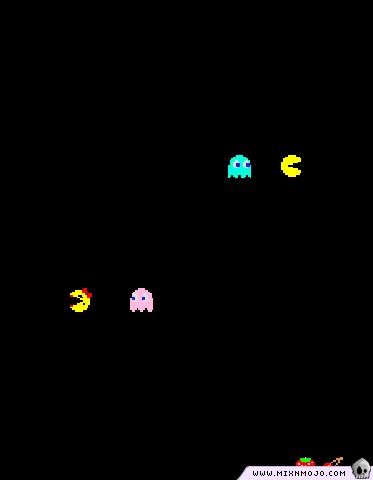Articles

Wilmunder Memoirs Page Three
Part 2: The Birth of SCUMM...
Written by Aric Wilmunder

Maniac Mansion was nothing short of a brilliant accomplishment, not just the design, but technologically as well. The design came together very quickly, with most of the characters as they appeared in the game. The story was straight forward, but the addition of player selection at the beginning as well as multiple endings really opened up the player's imagination. Funny thing was that the differences between the characters were quite small. Only Michael F. Stop could use the photography room, and only Wendy could retype the Meteor's memoirs. Bernard couldn't use the weight machine, but other than that, any character could solve most of the puzzles. A significant development was having multiple characters in different places moving the story forward. Remembering which of the characters was in which part of the house became part of the game play. Forgetting that Dave was in the entryway and having another character ring the doorbell would cause Dave to get caught by one of the household's odd inhabitants as they traveled from their room to answer the front door. The entire mansion became an almost realistic location as you learned the layouts, hidden back doors, and got to know the inhabitants.

Another significant accomplishment was that not only was the game created in just slightly over a year's time, much of the technology had to be created from the ground up as well. Ron did re-use as many pieces of technology as were available at the time. He and I had ported a cel-based animation tool that was converted to support sprites on the Commodore 64. Chip Morningstar, one of the most talented programmers I have worked with, created the SCUMM language in just a few short weeks. With only some minor syntax changes, the core language remained unchanged for nearly a decade. Another first for Maniac Mansion was that not only was the entire game written in SCUMM, but the credits, the opening movie, and the closing were scripted as well.
I don't actually recall who first called the language SCUMM. It is an acronym for Script Creation Utility for Maniac Mansion. For the longest time, we called the program that ran the scripts SCUMM, but we realized the error and renamed the game engine SPUTM, for Scumm Presentation Utility (tm). This set the trend for the naming convention used for all of the game tools created by the team.

Another first was the use of non-interactive scenes, allowing the player to see the activity in other locations in the game, while their main character stayed in one place. Ron didn't know what to call these and went to Steve Arnold, then president of LucasFilm Games. Ron compared it to the between-level clips in Ms. Pacman and asked Steve what the filmmaking term was for scenes that cut-away from the main story. Steve pondered this and told Ron that these are called 'Cutscenes.' This was the moment when the term was coined, and the script command 'cutscene' was added to the SCUMM language as a command to indicate that control was being temporarily taken away from the player.

Maniac Mansion never was a monster hit by industry standards, but as a marketing person at Activision first said, "It has Legs!". Maniac continued to sell solid numbers for 4-5 years. The first version shipped for the C-64 in 1987, and the last version shipped as a sub-game in Day of the Tentacle on the Macintosh, over 10 years later. Over the years, Maniac Mansion was ported to the Apple ][, Atari ST, Amiga, IBM PC, Nintendo 8-Bit, FM-Towns, and Apple Macintosh. Unlike so many other games where porting the game typically destroyed much of the game play, the gaming experience on each of these versions was kept at a high standard with graphics and sounds enhanced to take full advantage of each platform. The scripts beneath the game were left almost completely intact.

The second project to use SCUMM was Zak McKraken and the Alien Mindbenders. This off-the-wall story of a tabloid writer discovering Elvis living among space aliens actually started out as a serious piece of science fiction. What started out in the original design as a Sino-American scientific expedition to Mars ended up in the game as two Harvard co-eds having a vision and then traveling to Mars in their converted VW bus. The puzzles were equally twisted, and since one of the co-designers was a musician, it featured the most extensive music and audio library of any product at that time. I know, since I had to manage the product for the Amiga computer. One morning I asked the programmer what was causing the delays, and I found that he had spent his entire morning dropping water balloons into his bathtub. He had moved all of his audio recording equipment into the bathroom in order to get 'just the right' sound for one of the effects.

Zak was another milestone for SCUMM. The original game, while scripted, had a number of 'hard-coded' features specifically designed only for Maniac Mansion. During the development of Zak, every one of the game-specific features was removed, and generic scripting commands were added in their place. This changed the system from a code-base just for one game, to a game engine that would allow multiple teams to use the same system to build very different products.